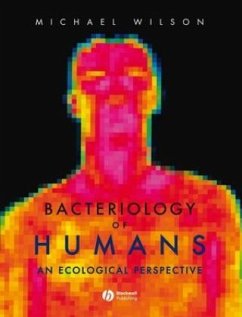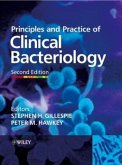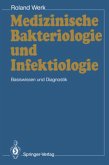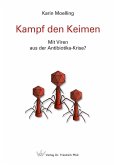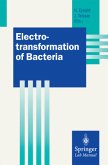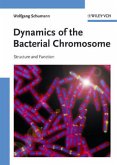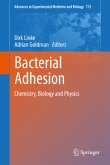- Gebundenes Buch
- Merkliste
- Auf die Merkliste
- Bewerten Bewerten
- Teilen
- Produkt teilen
- Produkterinnerung
- Produkterinnerung
Bis vor wenigen Jahren beschränkte sich das Interesse an den Mikroorganismen des Menschen auf solche, die Krankheiten verursachen. Erst langsam wird die Bedeutung der Biozönosen des Menschen erkannt. Dieses Referenzwerk stellt die vielfältigen systemischen Wechselbeziehungen vor.
Andere Kunden interessierten sich auch für
![Principles and Practice of Clinical Bacteriology Principles and Practice of Clinical Bacteriology]() Stephen H. Gillespie / Peter Hawkey (Hgg.)Principles and Practice of Clinical Bacteriology617,99 €
Stephen H. Gillespie / Peter Hawkey (Hgg.)Principles and Practice of Clinical Bacteriology617,99 €![Medizinische Bakteriologie und Infektiologie Medizinische Bakteriologie und Infektiologie]() Roland WerkMedizinische Bakteriologie und Infektiologie54,99 €
Roland WerkMedizinische Bakteriologie und Infektiologie54,99 €![Kampf den Keimen Kampf den Keimen]() Karin MoellingKampf den Keimen15,00 €
Karin MoellingKampf den Keimen15,00 €![Electrotransformation of Bacteria Electrotransformation of Bacteria]() Electrotransformation of Bacteria118,99 €
Electrotransformation of Bacteria118,99 €![Dynamics of the Bacterial Chromosome Dynamics of the Bacterial Chromosome]() Wolfgang SchumannDynamics of the Bacterial Chromosome159,00 €
Wolfgang SchumannDynamics of the Bacterial Chromosome159,00 €![Therapie bakterieller Infektionen Therapie bakterieller Infektionen]() Erich SemenitzTherapie bakterieller Infektionen54,99 €
Erich SemenitzTherapie bakterieller Infektionen54,99 €![Bacterial Adhesion Bacterial Adhesion]() Bacterial Adhesion158,99 €
Bacterial Adhesion158,99 €-
-
-
Bis vor wenigen Jahren beschränkte sich das Interesse an den Mikroorganismen des Menschen auf solche, die Krankheiten verursachen. Erst langsam wird die Bedeutung der Biozönosen des Menschen erkannt. Dieses Referenzwerk stellt die vielfältigen systemischen Wechselbeziehungen vor.
Hinweis: Dieser Artikel kann nur an eine deutsche Lieferadresse ausgeliefert werden.
Hinweis: Dieser Artikel kann nur an eine deutsche Lieferadresse ausgeliefert werden.
Produktdetails
- Produktdetails
- Verlag: Wiley & Sons
- 1. Auflage
- Seitenzahl: 368
- Erscheinungstermin: 28. April 2008
- Englisch
- Abmessung: 253mm x 189mm x 24mm
- Gewicht: 1060g
- ISBN-13: 9781405161657
- ISBN-10: 1405161655
- Artikelnr.: 22956411
- Herstellerkennzeichnung
- Libri GmbH
- Europaallee 1
- 36244 Bad Hersfeld
- gpsr@libri.de
- Verlag: Wiley & Sons
- 1. Auflage
- Seitenzahl: 368
- Erscheinungstermin: 28. April 2008
- Englisch
- Abmessung: 253mm x 189mm x 24mm
- Gewicht: 1060g
- ISBN-13: 9781405161657
- ISBN-10: 1405161655
- Artikelnr.: 22956411
- Herstellerkennzeichnung
- Libri GmbH
- Europaallee 1
- 36244 Bad Hersfeld
- gpsr@libri.de
Michael Wilson is a Professor of Microbiology in the Faculty of Biomedical Sciences at University College London and is Director of the Eastman Centre for Microbial Diseases within this university. He holds a PhD in Microbiology from University College Galway, Ireland, a Doctor of Science from the National University of Ireland and is a Fellow of the Royal College of Pathologists. He has written and/or edited eight books and published more than 270 scientific papers in the fields of microbiology and infectious diseases.
Preface.
Abbreviations of genera.
1. The human-microbe symbiosis.
1.1. Overview of the nature and distribution of the microbial communities
inhabiting humans.
1.2. Environmental determinants that affect the distribution and
composition of microbial communities.
1.3. Host characteristics that affect the indigenous microbiota.
1.4. Techniques used to characterize the microbial communities inhabiting
humans.
1.5. The epithelium - site of host-microbe interactions.
1.6. Further reading.
2. The indigenous microbiota of the skin.
2.1. Anatomy and physiology of human skin.
2.2. Cutaneous antimicrobial defense systems.
2.3. Environmental determinants operating at different skin regions.
2.4. The indigenous microbiota of the skin.
2.5. Overview of the cutaneous microbiota.
2.6. Sources of data used to compile figures.
2.7. Further reading.
3. The indigenous microbiota of the eye.
3.1. Anatomy and physiology of the eye.
3.2. Antimicrobial defense systems of the eye.
3.3. Environmental determinants on the conjunctival surface.
3.4. The indigenous microbiota of the eye.
3.5. Overview of the ocular microbiota.
3.6. Sources of data used to compile figures.
3.7. Further reading.
4. The indigenous microbiota of the respiratory tract.
4.1. Anatomy and physiology of the respiratory tract.
4.2. Antimicrobial defense systems of the respiratory tract.
4.3. Environmental determinants within the respiratory tract.
4.4. Indigenous microbiota of the respiratory tract.
4.5. Overview of the respiratory microbiota
4.6. Sources of data used to compile figures
4.7. Further reading.
5. The indigenous microbiota of the urinary system of females.
5.1. Anatomy and physiology of the urinary system of females.
5.2. Antimicrobial defenses of the female urinary system.
5.3. Environmental determinants within the female urethra.
5.4. The indigenous microbiota of the female urethra.
5.5. Overview of the microbiota of the urinary tract of females.
5.6. Sources of data used to compile figures.
5.7. Further reading.
6. The indigenous microbiota of the reproductive system of females.
6.1. Anatomy and physiology of the female reproductive system.
6.2. Antimicrobial defense systems of the female reproductive system.
6.3. Environmental determinants at different regions of the reproductive
system.
6.4. The indigenous microbiota of the female reproductive system.
6.5. Overview of the microbiota of the female reproductive system.
6.6. Sources of data used to compile figures.
6.7. Further reading.
7. The indigenous microbiota of the urinary and reproductive systems of
males.
7.1. Anatomy and physiology.
7.2. Antimicrobial defenses of the male urinary and reproductive systems.
7.3. Environmental determinants within the male urinary and reproductive
systems.
7.4. The indigenous microbiota of the male urinary and reproductive
systems.
7.5. Overview of the microbiota of the male urinary and reproductive
systems.
7.6. Sources of data used to compile figures.
7.7. Further reading.
8. The indigenous microbiota of the oral cavity.
8.1. Anatomy and physiology of the oral cavity.
8.2. Antimicrobial defense systems of the oral cavity.
8.3. Environmental determinants at the various sites within the oral
cavity.
8.4. The indigenous microbiota of the oral cavity.
8.5. Overview of the oral microbiota.
8.6. Sources of data used to compile figures.
8.7. Further reading.
9. The indigenous microbiota of the gastrointestinal tract.
9.1. Anatomy and physiology of the gastrointestinal tract.
9.2. Antimicrobial defense systems of the gastrointestinal tract.
9.3. Environmental determinants within different regions of the
gastrointestinal tract.
9.4. The indigenous microbiota of the gastrointestinal tract.
9.5. Overview of the indigenous microbiota of the gastrointestinal tract.
9.6. Sources of data used to compile figures.
9.7. Further reading.
10. The future.
10.1. Further reading.
Index
Abbreviations of genera.
1. The human-microbe symbiosis.
1.1. Overview of the nature and distribution of the microbial communities
inhabiting humans.
1.2. Environmental determinants that affect the distribution and
composition of microbial communities.
1.3. Host characteristics that affect the indigenous microbiota.
1.4. Techniques used to characterize the microbial communities inhabiting
humans.
1.5. The epithelium - site of host-microbe interactions.
1.6. Further reading.
2. The indigenous microbiota of the skin.
2.1. Anatomy and physiology of human skin.
2.2. Cutaneous antimicrobial defense systems.
2.3. Environmental determinants operating at different skin regions.
2.4. The indigenous microbiota of the skin.
2.5. Overview of the cutaneous microbiota.
2.6. Sources of data used to compile figures.
2.7. Further reading.
3. The indigenous microbiota of the eye.
3.1. Anatomy and physiology of the eye.
3.2. Antimicrobial defense systems of the eye.
3.3. Environmental determinants on the conjunctival surface.
3.4. The indigenous microbiota of the eye.
3.5. Overview of the ocular microbiota.
3.6. Sources of data used to compile figures.
3.7. Further reading.
4. The indigenous microbiota of the respiratory tract.
4.1. Anatomy and physiology of the respiratory tract.
4.2. Antimicrobial defense systems of the respiratory tract.
4.3. Environmental determinants within the respiratory tract.
4.4. Indigenous microbiota of the respiratory tract.
4.5. Overview of the respiratory microbiota
4.6. Sources of data used to compile figures
4.7. Further reading.
5. The indigenous microbiota of the urinary system of females.
5.1. Anatomy and physiology of the urinary system of females.
5.2. Antimicrobial defenses of the female urinary system.
5.3. Environmental determinants within the female urethra.
5.4. The indigenous microbiota of the female urethra.
5.5. Overview of the microbiota of the urinary tract of females.
5.6. Sources of data used to compile figures.
5.7. Further reading.
6. The indigenous microbiota of the reproductive system of females.
6.1. Anatomy and physiology of the female reproductive system.
6.2. Antimicrobial defense systems of the female reproductive system.
6.3. Environmental determinants at different regions of the reproductive
system.
6.4. The indigenous microbiota of the female reproductive system.
6.5. Overview of the microbiota of the female reproductive system.
6.6. Sources of data used to compile figures.
6.7. Further reading.
7. The indigenous microbiota of the urinary and reproductive systems of
males.
7.1. Anatomy and physiology.
7.2. Antimicrobial defenses of the male urinary and reproductive systems.
7.3. Environmental determinants within the male urinary and reproductive
systems.
7.4. The indigenous microbiota of the male urinary and reproductive
systems.
7.5. Overview of the microbiota of the male urinary and reproductive
systems.
7.6. Sources of data used to compile figures.
7.7. Further reading.
8. The indigenous microbiota of the oral cavity.
8.1. Anatomy and physiology of the oral cavity.
8.2. Antimicrobial defense systems of the oral cavity.
8.3. Environmental determinants at the various sites within the oral
cavity.
8.4. The indigenous microbiota of the oral cavity.
8.5. Overview of the oral microbiota.
8.6. Sources of data used to compile figures.
8.7. Further reading.
9. The indigenous microbiota of the gastrointestinal tract.
9.1. Anatomy and physiology of the gastrointestinal tract.
9.2. Antimicrobial defense systems of the gastrointestinal tract.
9.3. Environmental determinants within different regions of the
gastrointestinal tract.
9.4. The indigenous microbiota of the gastrointestinal tract.
9.5. Overview of the indigenous microbiota of the gastrointestinal tract.
9.6. Sources of data used to compile figures.
9.7. Further reading.
10. The future.
10.1. Further reading.
Index
Preface.
Abbreviations of genera.
1. The human-microbe symbiosis.
1.1. Overview of the nature and distribution of the microbial communities
inhabiting humans.
1.2. Environmental determinants that affect the distribution and
composition of microbial communities.
1.3. Host characteristics that affect the indigenous microbiota.
1.4. Techniques used to characterize the microbial communities inhabiting
humans.
1.5. The epithelium - site of host-microbe interactions.
1.6. Further reading.
2. The indigenous microbiota of the skin.
2.1. Anatomy and physiology of human skin.
2.2. Cutaneous antimicrobial defense systems.
2.3. Environmental determinants operating at different skin regions.
2.4. The indigenous microbiota of the skin.
2.5. Overview of the cutaneous microbiota.
2.6. Sources of data used to compile figures.
2.7. Further reading.
3. The indigenous microbiota of the eye.
3.1. Anatomy and physiology of the eye.
3.2. Antimicrobial defense systems of the eye.
3.3. Environmental determinants on the conjunctival surface.
3.4. The indigenous microbiota of the eye.
3.5. Overview of the ocular microbiota.
3.6. Sources of data used to compile figures.
3.7. Further reading.
4. The indigenous microbiota of the respiratory tract.
4.1. Anatomy and physiology of the respiratory tract.
4.2. Antimicrobial defense systems of the respiratory tract.
4.3. Environmental determinants within the respiratory tract.
4.4. Indigenous microbiota of the respiratory tract.
4.5. Overview of the respiratory microbiota
4.6. Sources of data used to compile figures
4.7. Further reading.
5. The indigenous microbiota of the urinary system of females.
5.1. Anatomy and physiology of the urinary system of females.
5.2. Antimicrobial defenses of the female urinary system.
5.3. Environmental determinants within the female urethra.
5.4. The indigenous microbiota of the female urethra.
5.5. Overview of the microbiota of the urinary tract of females.
5.6. Sources of data used to compile figures.
5.7. Further reading.
6. The indigenous microbiota of the reproductive system of females.
6.1. Anatomy and physiology of the female reproductive system.
6.2. Antimicrobial defense systems of the female reproductive system.
6.3. Environmental determinants at different regions of the reproductive
system.
6.4. The indigenous microbiota of the female reproductive system.
6.5. Overview of the microbiota of the female reproductive system.
6.6. Sources of data used to compile figures.
6.7. Further reading.
7. The indigenous microbiota of the urinary and reproductive systems of
males.
7.1. Anatomy and physiology.
7.2. Antimicrobial defenses of the male urinary and reproductive systems.
7.3. Environmental determinants within the male urinary and reproductive
systems.
7.4. The indigenous microbiota of the male urinary and reproductive
systems.
7.5. Overview of the microbiota of the male urinary and reproductive
systems.
7.6. Sources of data used to compile figures.
7.7. Further reading.
8. The indigenous microbiota of the oral cavity.
8.1. Anatomy and physiology of the oral cavity.
8.2. Antimicrobial defense systems of the oral cavity.
8.3. Environmental determinants at the various sites within the oral
cavity.
8.4. The indigenous microbiota of the oral cavity.
8.5. Overview of the oral microbiota.
8.6. Sources of data used to compile figures.
8.7. Further reading.
9. The indigenous microbiota of the gastrointestinal tract.
9.1. Anatomy and physiology of the gastrointestinal tract.
9.2. Antimicrobial defense systems of the gastrointestinal tract.
9.3. Environmental determinants within different regions of the
gastrointestinal tract.
9.4. The indigenous microbiota of the gastrointestinal tract.
9.5. Overview of the indigenous microbiota of the gastrointestinal tract.
9.6. Sources of data used to compile figures.
9.7. Further reading.
10. The future.
10.1. Further reading.
Index
Abbreviations of genera.
1. The human-microbe symbiosis.
1.1. Overview of the nature and distribution of the microbial communities
inhabiting humans.
1.2. Environmental determinants that affect the distribution and
composition of microbial communities.
1.3. Host characteristics that affect the indigenous microbiota.
1.4. Techniques used to characterize the microbial communities inhabiting
humans.
1.5. The epithelium - site of host-microbe interactions.
1.6. Further reading.
2. The indigenous microbiota of the skin.
2.1. Anatomy and physiology of human skin.
2.2. Cutaneous antimicrobial defense systems.
2.3. Environmental determinants operating at different skin regions.
2.4. The indigenous microbiota of the skin.
2.5. Overview of the cutaneous microbiota.
2.6. Sources of data used to compile figures.
2.7. Further reading.
3. The indigenous microbiota of the eye.
3.1. Anatomy and physiology of the eye.
3.2. Antimicrobial defense systems of the eye.
3.3. Environmental determinants on the conjunctival surface.
3.4. The indigenous microbiota of the eye.
3.5. Overview of the ocular microbiota.
3.6. Sources of data used to compile figures.
3.7. Further reading.
4. The indigenous microbiota of the respiratory tract.
4.1. Anatomy and physiology of the respiratory tract.
4.2. Antimicrobial defense systems of the respiratory tract.
4.3. Environmental determinants within the respiratory tract.
4.4. Indigenous microbiota of the respiratory tract.
4.5. Overview of the respiratory microbiota
4.6. Sources of data used to compile figures
4.7. Further reading.
5. The indigenous microbiota of the urinary system of females.
5.1. Anatomy and physiology of the urinary system of females.
5.2. Antimicrobial defenses of the female urinary system.
5.3. Environmental determinants within the female urethra.
5.4. The indigenous microbiota of the female urethra.
5.5. Overview of the microbiota of the urinary tract of females.
5.6. Sources of data used to compile figures.
5.7. Further reading.
6. The indigenous microbiota of the reproductive system of females.
6.1. Anatomy and physiology of the female reproductive system.
6.2. Antimicrobial defense systems of the female reproductive system.
6.3. Environmental determinants at different regions of the reproductive
system.
6.4. The indigenous microbiota of the female reproductive system.
6.5. Overview of the microbiota of the female reproductive system.
6.6. Sources of data used to compile figures.
6.7. Further reading.
7. The indigenous microbiota of the urinary and reproductive systems of
males.
7.1. Anatomy and physiology.
7.2. Antimicrobial defenses of the male urinary and reproductive systems.
7.3. Environmental determinants within the male urinary and reproductive
systems.
7.4. The indigenous microbiota of the male urinary and reproductive
systems.
7.5. Overview of the microbiota of the male urinary and reproductive
systems.
7.6. Sources of data used to compile figures.
7.7. Further reading.
8. The indigenous microbiota of the oral cavity.
8.1. Anatomy and physiology of the oral cavity.
8.2. Antimicrobial defense systems of the oral cavity.
8.3. Environmental determinants at the various sites within the oral
cavity.
8.4. The indigenous microbiota of the oral cavity.
8.5. Overview of the oral microbiota.
8.6. Sources of data used to compile figures.
8.7. Further reading.
9. The indigenous microbiota of the gastrointestinal tract.
9.1. Anatomy and physiology of the gastrointestinal tract.
9.2. Antimicrobial defense systems of the gastrointestinal tract.
9.3. Environmental determinants within different regions of the
gastrointestinal tract.
9.4. The indigenous microbiota of the gastrointestinal tract.
9.5. Overview of the indigenous microbiota of the gastrointestinal tract.
9.6. Sources of data used to compile figures.
9.7. Further reading.
10. The future.
10.1. Further reading.
Index

